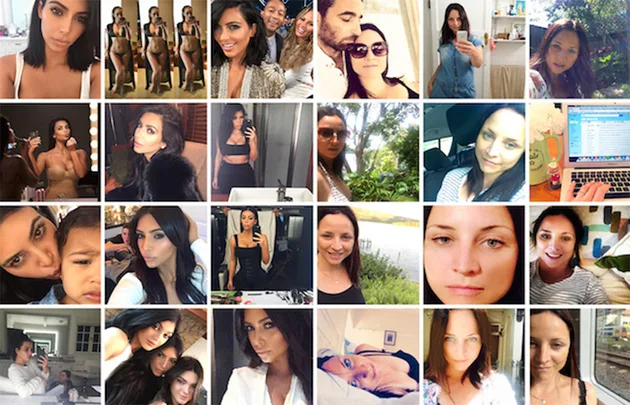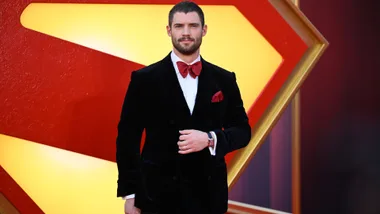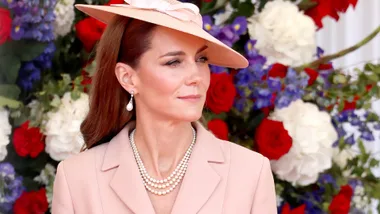Like many terrible realisations, it all happened in a changing room. I was trying on a dress that looked good on the rack – silk, summery, a soft fawn colour with a tie waist. But when I put it on it clashed with my skin, giving my face an unflattering pink glow. “Never mind,” I thought to myself, appraising my refection with a steely editor’s eye. “I can fix up the colour with an Instagram filter.”
That’s when I knew that my assignment – to selfie myself for a week at the same rate as the patron saint of selfies, Kim Kardashian – had started to go of the rails.
Let us consider the selfie. The word was almost unheard of a few years ago but has now earned a place in the Oxford English Dictionary. According to Google’s analytics, we take more than 93 million selfies every day, which is 326 times the rate at which we have orgasms. Kardashian, the world’s uncontested selfie grande dame, once described them as “the purpose of life” on her reality show, Keeping Up With The Kardashians. She wasn’t kidding. The 34-year-old wife of Kanye West and mother to 23-month-old daughter North is reported to take up to 1200 selfies a day. That’s 100 selfies an hour over 12 hours, or one selfie every 36 seconds that she’s awake. “How on earth does she have time to do anything else?” you may ask. I’ll tell you right now: she doesn’t.
Kardashian has even hired a “selfie editor” to advise her on lighting and angles and decide which of her hundreds of self-portraits will make it onto social media. She has also single-handedly invented a sub-genre of selfie, the butt selfie or “belfie”, and is said to make millions of dollars via selfie product placement from the cosmetic and alcohol companies she endorses. Because Kardashian is truly the world’s most prolifcc 360-degree, 365-days-a-year, walking, talking, pouting brand, it’s hard to know where the selfies stop and the woman starts. If aliens landed on Earth tomorrow, imagine trying to explain to them that this is a genuine way a member of our species makes a living.
On May 5, Kardashian is releasing Selfish (Rizzoli, $29.95), a 448-page book of her own selfies produced by a luxury New York publishing house – just in case you are, in fact, an alien and haven’t discovered the hundreds of other media channels where you can already view this woman’s photographic meditations on herself for free.

If not a sure sign of the coming apocalypse, the book’s release is certainly a good argument for the idea that we’ve reached Peak Selfie. Add the rising popularity of the selfie stick (aka the Wand of Narcissism), the fact that a UK college is offering a course in “taking the perfect selfie”, and statistics unearthed by The Body Shop that say the average woman spends 753 hours of her life capturing the perfect online profile picture, and it’s easy to assume our digital lives are beginning to trump our flesh-and-blood lives.
But are selfies making us more narcissistic? Or is our increasing narcissism making us take more selfies?
US researcher Dr Jean Twenge from San Diego University analysed data from 11 million young people across 20 years, and found that we’re signifcantly more narcissistic than we were a decade ago. The selfie, it could be argued, is merely symptomatic of this; narcissism’s business card, if you like.
Other experts believe that selfies are not in and of themselves problematic. “It’s not necessarily narcissistic to explore your own perspective of yourself visually – look at the history of self-portraits,” says Associate Professor Doris McIlwain of Sydney’s Macquarie University. The problem, she says, lies with the kind of selfies we create. If you’re gilding the lily (read: obsessing over filters and lighting), you may be far more interested in showing of than showing your true self. “These activities become narcissistic if you hide what you see as your bad bits and if it is all about you, no matter what the context.”
To explore what really goes into making selfies round the clock, and to see whether I turn into a vain, preening nightmare (plus quite possibly just to torture me for their own amusement), the editors at marie claire issued me with this challenge: spend a week taking selfies of yourself – à la Kim Kardashian – and see what it does to your life. The results, despite blood, sweat, tears and a lifesaving retouching app, were not pretty …
I began my week as I imagined I’d continue: simply taking photos of myself. Here I am lying on my bed surrounded by cushions. Here are my hands at my laptop, next to some artfully dishevelled wildflowers. And here I am in the garden – laughing, carefree! Soon the old-school, analogue-camera shutter cuh-chook of my iPhone becomes the soundtrack of my days. I find myself taking an average of 10 shots per set-up, until I get one where the light forms flattering hollows along my cheekbones and the crow’s-feet are minimal (pro tip: natural but not too bright sunlight, shoot from above).
Tentatively, I posted my bed shot to Instagram, feeling kind of silly. It attracted a mere 10 “likes” but a handful of innocuous but encouraging comments: “Beauty!” declared one friend; “You’re so damn cute!” wrote someone else.
I was nailing it. I could almost feel the validating squirt of dopamine shoot into my synapses with each new like (which it probably was; a 2012 Harvard University study says showing of about ourselves on social media triggers the famous and addictive pleasure-and-reward chemical). It was only a matter of time before someone signed me up as a brand ambassador for a vigorous energy drink.
Soon my initial selfie-shyness started to fade, as my eye adjusted to seeing every moment of my life inside a square frame. My days became taken over by selfie-prep – shifting furniture, rearranging ornaments, asking people to move either out of frame (for sultry solo selfies) or into frame (for celebratory party selfies).
I quickly worked out which shots got me more likes: ones where I’m wrapped only in a towel in the bathroom received wide acclaim, as did anything with a pout. (“Alex, you look 16!” wrote one commenter). I flicked lights on and of to adjust shadows. I got blow-dries every two days. Inhibitions gave way to my hunger for likes.
Then a few things happened. I suddenly noticed I was bleeding Instagram followers. There were over 1800 at the beginning of the experiment; a week in and I’d plummeted to 1718. As if that wasn’t enough of a sign, I discovered I was starting to annoy everyone I actually lived my life with. My husband begged me to stop. My son got upset when he had to repeat basic questions to a mother completely, helplessly ensconced in her phone.
Most of all, I was tired. I was really tired of everything in my life being selfie-centred. Then I got a cold. I think I got an eye infection from my fake lashes. I didn’t want to photograph myself looking like this – or looking like anything, come to think of it.
Stop the shoot, I want to get off.
That’s when it hit me: being Kim Kardashian would suck. The time and effort required to create the illusion of a perfect life would mean she couldn’t actually have one. She must look flawless at all times. She’s forced to attend parties pretty much constantly, even if she wants to stay at home in a pair of old trackies and eat pizza. She needs the cute baby and the endless wardrobe turnover and the famous husband as accessories, and there is never, ever a day of. “A brand of [Kardashian’s] size requires strategy and constant management of public perception,” comments bestselling author and personal brand expert Ben Angel. Think the famous “Break the Internet” shot, where Kim’s magnificent buttocks acted as a drinks trolley. The butt selfies are not a whim. The whole enterprise is a machine. A grinding, loveless machine.
For Kim, however, at least it’s not a thankless machine. She’s compensated for her exertions by a net worth of $84 million, whereas I was rewarded with nothing more than exhaustion and fewer social media followers than I began with.
Because I’m not Kim Kardashian. I don’t have that body, that hair, that famous husband or an invitation to the Grammys. My Instapics are amateur shots of my home, my friends, my neighbourhood – and really, no-one wants to see my face that often.
Angel gets it. “Most of our lives can be pretty mundane behind the camera without the filter. We have to proactively create photo opportunities that will pique people’s interest,” he says. “This can be tiring.”
It is tiring, and it’s also more than a little soul destroying. Every 15 or 20 minutes I spent prepping for a selfie was time in which I could have been doing something – anything – vaguely worthwhile. Now I don’t want to get too self-righteous here – it’s not as though I was running around feeding starving children before this experiment started – but cooking dinner for my family is more important than this. Hell, sitting still and daydreaming for five minutes has more value.
Yet selfies aren’t going anywhere. Already, younger generations think of selfies as no more remarkable than writing out a shopping list or sending a text. “I watch young people in my workshops take selfies without thinking; it is second nature for them in the same way that they take a photograph of a brainstorming group activity instead of writing it out,” says Natalie Hendry, mental health and visual social media researcher at Melbourne’s RMIT University.
But at what cost, I wonder? How will future generations – weaned on the idea that their relevance and attractiveness can be gauged by the number of clicks received by their self-portrait – cope in the real world, and as they age?
Media psychologist Dr Pamela Rutledge isn’t overly worried. Selfies, she argues in her column for Psychology Today, are merely a modern-day form of self-portraiture that humans have been indulging in since we scribbled on cave walls, and are a tool to help us explore ourselves. “One of the most effective ways to know yourself is to see yourself as others see you,” she says. “By offering different aspects through images, we are sharing more of ourselves, becoming more authentic and transparent.”
She may be right. But, if I learnt one thing from my week of selfie-ing it was that if I were Kardashian, I’d take my $65 million and stop right now.
When it was over, I confessed to some of my friends about the real reason I’d been fooding their social media feeds with photos of myself. They laughed with relief. “Oh, thank God, I thought I was going to have to come round and check on your mental health,” said one.
She may still need to. Just looking at my iPhone gives me PTSD.
The context passage in the Oxford English Dictionary’s entry for “selfie” is: “Occasional selfies are acceptable, but posting a new picture of yourself every day isn’t necessary.” I’d add that the word “selfie” could be short for self-absorbed, self-obsessed, self-aggrandising, self-centered and, yes, as even Kardashian appears to be aware, selfsh.
Kim, it’s been real … or not, if I’m honest. I’m done keeping up with you.










